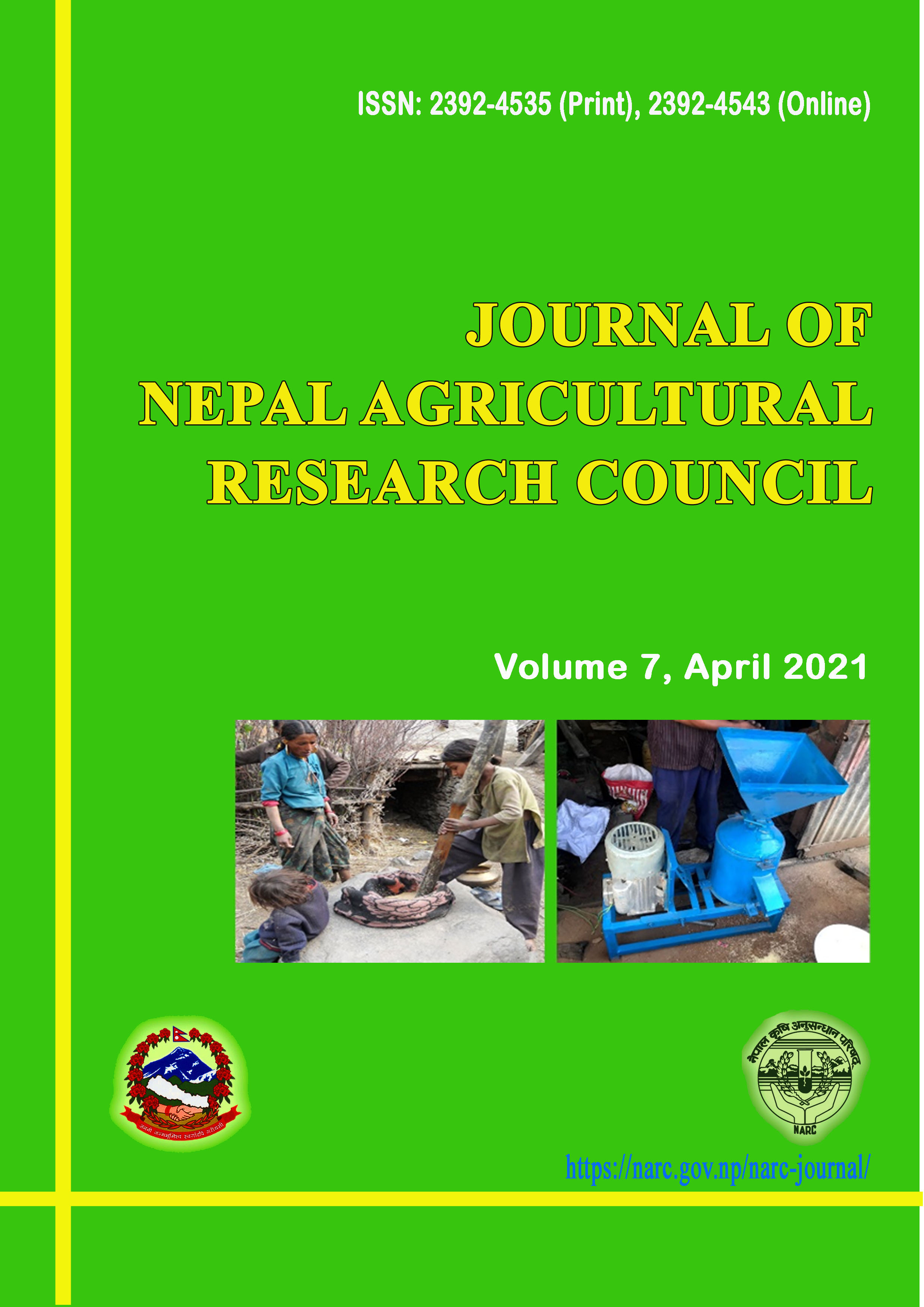Evaluation of Broad Leaf Mustard Genotypes in Central Mid-hill of Nepal
DOI:
https://doi.org/10.3126/jnarc.v7i1.36941Keywords:
Broad leaf mustard, consecutive years, leaf, leaf size, mid-hills, yieldAbstract
Seven genotypes of broad leaf mustard were evaluated for their performance at research field of Khumaltar, Lalitpur, Nepal in winter season of consecutive three years; 2016, 2017 and 2018. The main objective of these studies was to find out the most promising genotypes of broad leaf mustard. The experiments were conducted in randomized complete block design with three replications. Three weeks old seedlings were transplanted on first week of October at the spacing of 45 cm x 30 cm. Fertilizer was applied at the rate of 200:150:100 NPK kg/ha and 15ton compost per hectare and other cultural practices was carried out as per recommendation of National Horticulture Research Centre, Khumaltar, Lalitpur, Nepal. Fresh consumable fully developed green leaves were harvested frequently; seven to ten days interval. In the present study, wide genetic variability was observed on plant vigor, insect, disease, leaf length (cm), leaf width (cm), leaf harvest yield in number and weight, and consumer’s response recorded. On the basis of overall characteristics, among the evaluated genotypes; HRDBLM010 showed superior performance with good uniformity, vigorous growth, moderately resistant with insects pest and disease (2.1), bigger leaf size (44.2 x 27.5 cm), least petiole length (0.93 cm), significantly higher leaf yield in number (25) and weight (748 g/plant and 51.24 t/ha), medium late bolting, good taste has been selected for cultivation at central mid-hills (Kathmandu valley) condition of Nepal. The next promising genotype is HRDBLM004 which had also good uniformity, vigorous, less damage by insect (2.4) and disease (2.5), higher yield in number (41) and weight (848 g/plant and 60.10 t/ha) and softness. These two genotypes have been found promising genotypes for cultivation in central mid-hills of Nepal.
Downloads
Downloads
Published
How to Cite
Issue
Section
License
This license enables reusers to distribute, remix, adapt, and build upon the material in any medium or format for noncommercial purposes only, and only so long as attribution is given to the creator.




